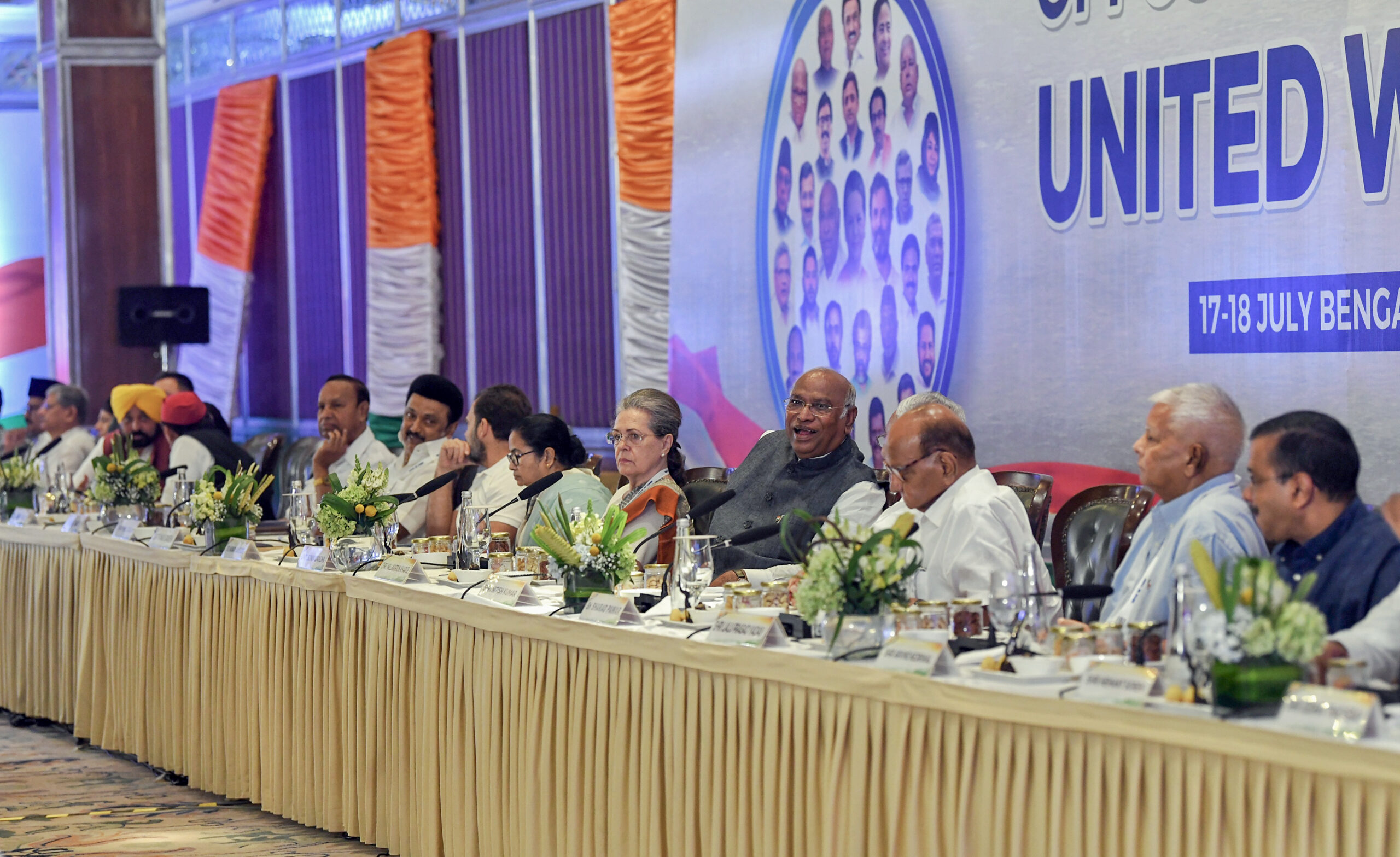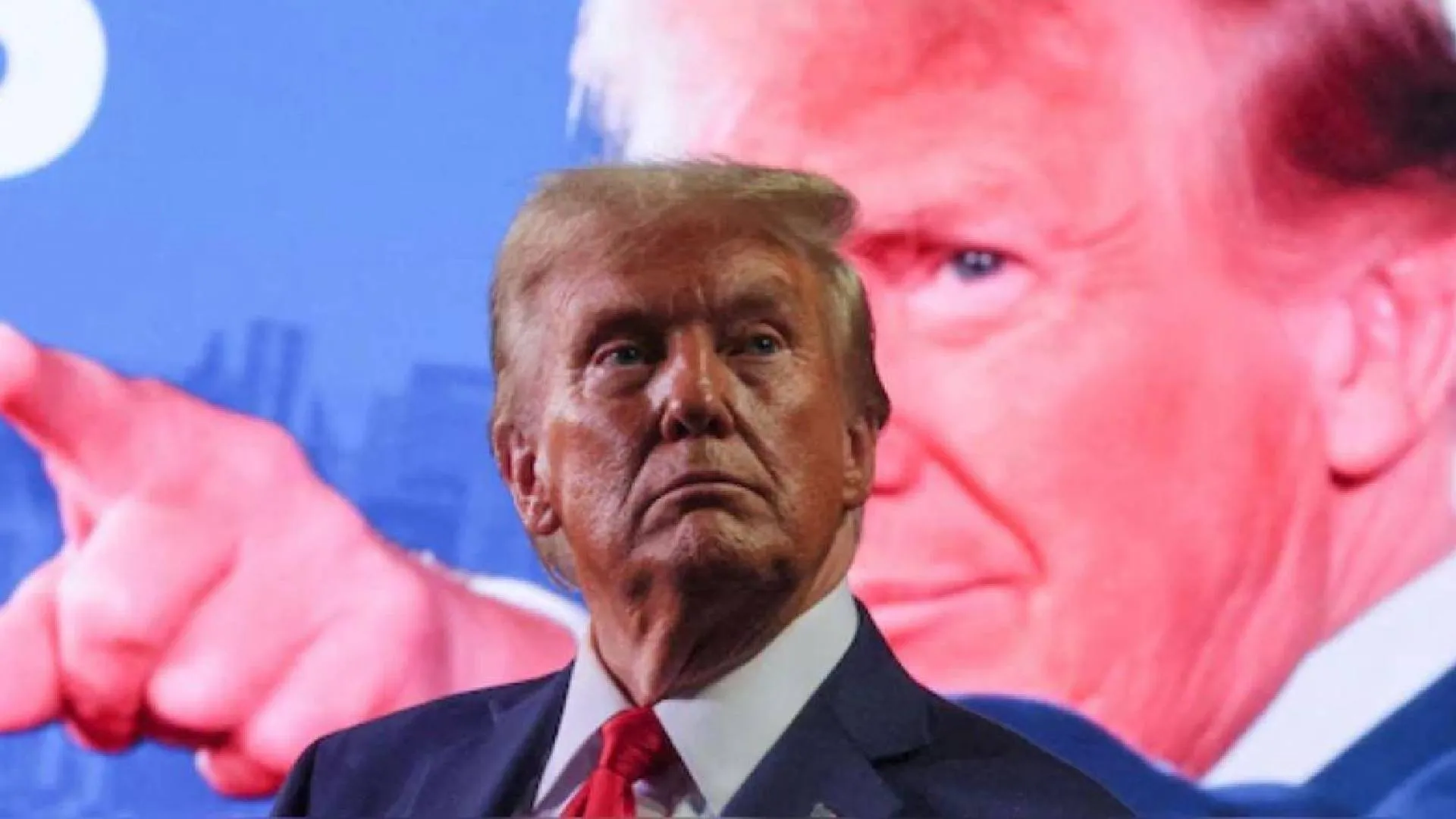The 26-party coalition led by the Congress known as “The Indian National Developmental Inclusive Alliance” or “INDIA” has nothing new to offer, and is the same old wine in a new bottle. The Opposition political groups from each state banded together to take on the BJP, a powerful political rival at the national level. This newly formed alliance, which is nothing but a revamped version of the Congress-led UPA, will have an 11-member coordination committee that will soon decide on all crucial matters, including the nature of the alliance, seat sharing, and Prime Ministerial face for the front, if everyone agrees.
Every political party, group, or association is free to choose the name it deemed fit to represent its collective goals and identity. From that angle, it does matter what name you go to the people with, as it should be reflective of its ideology, identity, nature, and objectives. The Congress has picked up the name of its alliance as “INDIA” after careful internal deliberations, no matter whom they want to give its credit or whosoever has proposed it. Around a decade back, the Aam Aadmi Party (AAP) successfully appropriated the common man’s identity into a political party. It sets the tone for this alliance’s current political name and discourse. And this time, the Congress party is willing to set an ideological and psychological discourse that is going to be way more intense and prolonged than a mere political battle or elections. Despite this, it has certain flaws and negative connotations that will surely constrain its prospective success.
The acronym “INDIA” represents the colonial idea of Bharat both in name and spirit, no matter what explanation you wish to give it. Forces that claim to represent India after 75 years of India’s independence and take it forward in the 21st century prefer to continue with the colonial structures, names, laws, narratives, institutions, and education system that is antithetical to Bharat and devoid of Bhartiyata. They have rather perpetuated the colonial narratives of caste, race, region, language, community, and false divisive discourses such as the Aryan invasion theory that have been repudiated on historical and scientific grounds. In post-independent India, it became the core of the “Left-Congress Consensus” of how to run the country by keeping it divided through coloniality and colonial power structures. The impact of those narratives was so strong that even now, a section of Indian society is confused about their own identity, roots, history, and culture. The colonial ideas, theories, concepts, ideologies, and systems still dominate our academic discourse and for long its post-colonial political representatives didn’t face any formidable challenge. In a way, India attained political independence in 1947, but it has yet to attain freedom or Swaraj. The naming of this alliance will also reignite the debate between India and Bharat, coloniality and Bhartiyata, dynastic politics, and the people of India. It will be a battle of ideas that represents conflicting identities vs unity in diversity or pessimism vs aspirations.
By appropriating a nation with a political alliance, the Congress party is also trying to set a grand and ambitious narrative for the party. Previously also, the party has tried to set such narratives when sycophants such as Dev Kant Barooah declared “Indira is India, India is Indira”. It echoes certain mentalities when a nation is equated with a person. Even refereeing to Mahatma Gandhi as the “father of the nation” is also reflective of this thought process. By naming its political alliance as “INDIA”, the Congress party is trying to play a psychological gimmick that they are the only ones representing India and if they lose the elections, then India would lose and that India and BJP-led NDA are antithetical to each other.
The only common thread that has “united” bitter ideological and political rivals is their anti-BJP stance. In politics, there is nothing wrong in allying to win elections; but ideally, there should be some common positive ground. If an alliance comes up with an alternative vision or policy framework or governance mechanism it makes sense to people. But, political opposition to someone can’t provide a sufficient ground for political unity in the long run. Political opportunism with ideological commonality can still sustain; but pure political opportunism, ideological differences, and grand ambitions of individual leaders can’t hold for long.
The Congress-led “INDIA” has divisive fault lines within that were mirrored at the time when its proposed name was discussed. The leaders of many political parties such as Nitish Kumar, Mehbooba Mufti, Uddhav Thackeray, and Left leaders Sitaram Yechury, D. Raja, G. Devarajan, etc. have some reservations with the proposed name. Many other names for the alliance were also suggested, which were silenced by the strong intervention of none other than Rahul Gandhi. It sent a strong signal that it is not going to be just a Congress-led alliance, but a Congress-dominated alliance. Many parties seem concerned about seat-sharing agreement. Overall, it gives the impression of a loose alliance of uneasy partners.
On the ideological front, this new alliance seems to be more of a cocktail that lacks coherence and consistency. We have once bitter regional political rivals as alliance partners such as the JDU and RJD, Shiv Sena and NCP, Congress and TMC, TMC and the Left, SP, and Congress, National Conference and the PDP etc. Political parties such as the CPI-ML that don’t even believe in Indian democracy and want to take a revolutionary path to uproot it are also part of this alliance. As of now, it is difficult to predict its political future; but it’s a club of inconsistent rival forces. Broadly, two interpretations of India are offered by two political parties—namely the Congress and the BJP. One of them is being dominated by the colonial narrative that translated into a post-colonial consensus with minor aberrations plus dynastic rule and the other one claimed to be thoroughly indigenous, nationalistic, deeply rooted in Indian history and culture and popularly known as the “New India”. Since most of the mainstream political parties are now part of these two alliances, now it is up to the people, which one they prefer and rely on in the long run.
Hari K. Sharma teaches Political Science at The Lady Shri Ram College for Women, University of Delhi.

















